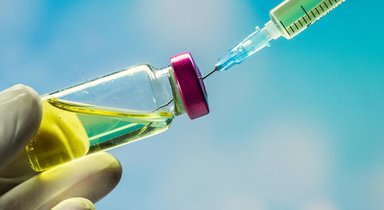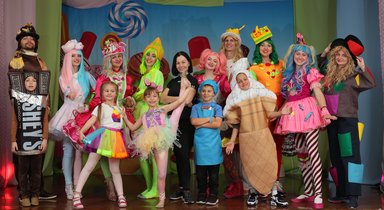News
Does Vaccine signal the events come back?
Stephan Cartello • сент. 22, 2020

US President Donald Trump announced last week that, by April, most Americans would be vaccinated. Both China and Russia are going ahead, rolling out their vaccines. In Europe, Astra Zeneca, the company that will distribute a vaccine developed by Oxford University, has re-started trials after two participants developed side effects.
All these candidates have their issues.
For some, rules are being bent to gain geopolitical power, for others, there is a sense of urgency dictated by political pressures. In other cases, it is unclear why side effects are being looked at.
One thing is for sure: there is a palpable feeling that we are closer to a vaccine. In the worst-case scenario, a safe candidate will be available in less than a year from now.
If you transitioned your event to virtual or canceled over the past six months, you are likely now planning for that timeframe. Therefore, it feels relevant to have a conversation about the implications of a vaccine rollout and what we can expect in different quarters of 2021.
Event Planners Think a Vaccine Is the Only Way Out
Before we delve into scenario planning, it is essential to reinforce what vaccine means for the event industry. Back in June, survey asked over 1,000 event professionals a few questions on the industry comeback.
Two answers reinforced the need for a vaccine as a way out. The first is about what is currently preventing planners from running events, and by an overwhelming margin, more people pointed out safety than any other factor.

Secondly, survey asked what would make them feel at ease with a comeback, most agreed that a vaccine is a way out.

An announcement of a vaccine is probably the most important news the event industry is waiting for. It makes sense to start planning for that day as it seems it is approaching soon.
When Will a Vaccine Start to Have an Impact on the Events Comeback?
To forecast how a vaccine will impact the industry comeback, it is crucial to understand how a vaccine access plan will work. Scientific journal Nature identifies five phases:
Phase 1: Healthcare workers
Phase 2: People with underlying conditions or older adults
Phase 3: Essential workers, including teachers and school personnel
Phase 4: Young adults, children
Phase 5: Everybody else
The publication discusses a potential combination of Phases 1 and 2, but realistically, the first doses will not be available to the masses.
In this view, it is also vital to discuss when a vaccine will start impacting the comeback — what we call the vaccine effect. In order to achieve that, there are two factors to keep an eye on:
- The perception of safety. This is the element making events the riskiest of the activities to perform right now. When people are able to access the vaccine, the feeling that we are exposing ourselves to risk will go down. That effect, in tandem with testing at events, tracing, distancing, and better cures, will make prospective attendees feel safer to attend and countries ready to remove limitations.
- The percentage of the population vaccinated. As more people get access, it is logical to anticipate a gradual comeback to normalcy — provided everything goes well, and the vaccines are effective.
FOURTH QUARTER 2020: INITIAL ROLLOUT
At this stage, it is very unclear when the first doses will be available. In the US, a group of pharmaceutical companies working on candidates agreed that they would not release a candidate that is not safe.
Yet there is increased pressure to release a candidate as soon as possible. Many are pointing at late November, and we know we will hear about Moderna’s vaccine candidate, one of the most talked about, by then.
Even if the vaccine begins to roll-out in November, there will be little to no effect on the industry.
Very few events are planned in that timeframe, and the likelihood of a candidate being released is still low. If you are preparing for a comeback of your in-person event in that timeframe, it does not makes sense to factor in a vaccine effect on the propensity to attend or on countries lifting bans.
FIRST QUARTER 2021: MORE SUBSTANTIAL ROLLOUT
By early 2021, we can anticipate more people accessing the vaccine. If access to a vaccine starts in November, we can also expect a lower risk perception towards events. As the most at-risk populations are taken care of, the idea that younger people could get infected and spread it to those in their family with underlying conditions will subside.
This is one of the key concerns fuelling the current scare experienced in many countries even where the average infected age is lower. However, there are still risks associated with spreading the virus to those who have a high risk of dying.
Therefore, a safer environment could be anticipated by the end of the first quarter 2021. March will be a month in which we will have a lot of clarity on a vaccine’s effects. This element, in conjunction with better cures and the availability of rapid testing, will make scheduling events safer.
Will these events be full-fledged experiences as we remember them back in January 2020? Absolutely not. They will be hybrid with a vital online component.
THIRD QUARTER 2021: WIDER ROLLOUT
This is when the largest part of the population will have access to vaccines. It is also safe to assume that many companies will have carried out their vaccination programs, offering it to their employees.
From this perspective, we will start to see the return of a critical element of business events as we know it: travel.
Once travel comes back, even at 75 percent capacity, we can begin to foresee an actual return to events as they used to be.
Spring 2021 feels like it will be a pivotal milestone to go back to the industry as we know it. Planning events in May or June feels safe enough. These will still be hybrid events but with a larger contingent of live attendees. Thousands of people may begin to gather. By then, rapid testing will also be a reality. The combination of both rapid testing and a vaccine offers a positive outlook for 2021.
FOURTH QUARTER 2021: UNIVERSAL VACCINE AVAILABLE
Going down this route, the fourth quarter is the safest to plan for. By then, most will be vaccinated, and things can resume more or less normally. This is what Anthony Fauci states, and it does make a lot of sense.
By late 2021, most audiences will feel confident in traveling to attend events. Will virtual attendance be gone? Absolutely not. Hybrid events will still be present, but the percentage of those attending in person will be higher.
CONCLUSION
A vaccine becoming available does not mean that the industry can go back to what it was overnight. Different phases of vaccine availability will determine the speed of the comeback.
It is fair to say that as soon as more people get a vaccine, a positive effect on the safety perception of events will materialize. That vaccine effect will compound month over month and, combined with better contact tracing and testing technology, will pave the way for a speedier comeback.
There is still a risk in betting on the fourth quarter of 2020 and first quarter of 2021 for a comeback. Those business events counting on corporate travel for profitability may even be better off going virtual from the beginning.
Сохранить
Поделиться
Комментарий


